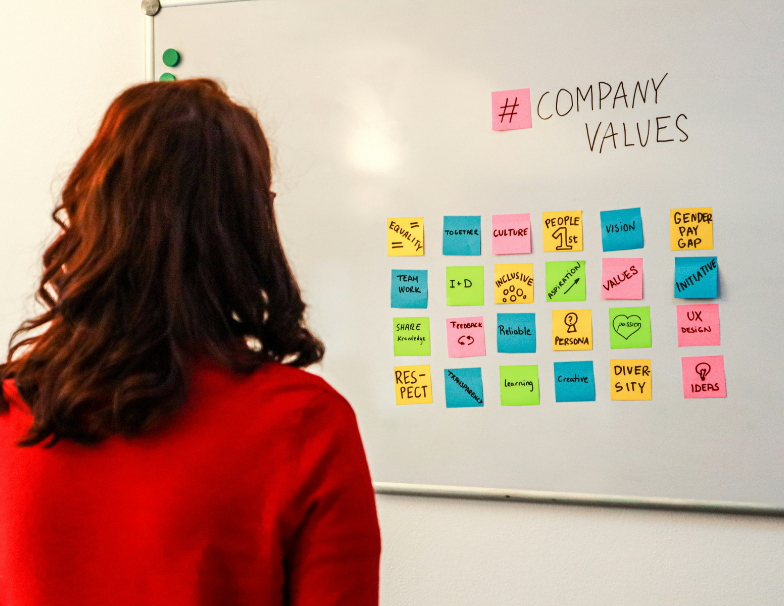Boosting Success through Effective Leader Team Building Activities

Leader team building is essential for improving team cohesion, communication, and productivity. Effective leaders bring their team together, align goals, and enhance the work environment. This article explores why leader team building matters and practical strategies to implement.
Key Takeaways
- Effective leadership enhances team communication and motivation, fostering a cohesive and productive work environment.
- Leader team building activities improve trust and collaboration among team members, paving the way for higher productivity and creativity.
- Implementing clear goals, promoting diversity, and providing constructive feedback are essential strategies for successful team building initiatives.
The Importance of Leader Team Building

A strong vision from leaders guides teams towards long-term goals, creating a sense of purpose that motivates and aligns everyone towards common objectives. Effective leaders play a pivotal role in minimizing mistakes by identifying potential issues early and addressing them promptly. Their ability to understand individual team members’ strengths and preferences makes them adept at motivating a diverse workforce in leadership roles.
Leaders set a valuable example for team members, encouraging commitment and success through their actions. A positive workplace atmosphere, fostered by strong leaders, enhances creativity and collaboration among team members. Leadership-building activities can significantly enhance team relationships and improve workplace dynamics, leading to a more harmonious and productive environment.
Effective leadership also improves workplace communication, creating an environment where team members feel comfortable sharing ideas and feedback. Regularly evaluating team-building initiatives and highlighting their significance can sustain employee interest and motivation. Visible support from top executives is crucial for fostering a sustainable team building culture within the organization.
Strong leadership is the cornerstone of a successful team. Investing in a leader's job team building equips the best leaders to guide their teams towards common goals, enhancing overall performance and showcasing effective leadership style in the leadership game.
Key Benefits of Leader Team Building

Team building fosters stronger communication and relationships among team members, resulting in a more open and effective dialogue. Open communication helps align expectations, reduces productivity losses, and ensures that everyone is on the same page. Activities like the Active Listening exercise improve communication and empathy through deep listening, making team members feel heard and valued.
Trust among team members is another crucial benefit of leader team building. When team members trust each other, productivity increases as they are more willing to seek help and collaborate on problem-solving. Trust-building activities allow team members to observe how others handle challenges, fostering a deeper understanding and mutual respect.
Moreover, team building activities:
- Foster communication, problem-solving, and camaraderie
- Strengthen relationships, ultimately boosting morale
- Unlock creativity and productivity
- Help in identifying individual team members’ strengths and weaknesses
- Aid in better team composition and balance.
In summary, the benefits of leader team building are manifold. From improving communication and trust to fostering a culture of collaboration and innovation, these activities are essential for developing high-performing teams and achieving organizational success.
Essential Strategies for Effective Leader Team Building
Maximizing the benefits of leader team building requires implementing effective strategies that align with organizational goals:
- Define expectations clearly at the start of projects to prevent inefficiencies caused by a lack of clarity.
- Integrate team building efforts into existing operations to enhance their recognition and effectiveness.
- Ensure that team building becomes a seamless part of the organizational culture.
Successful team building also involves encouraging information sharing among team members, which is essential for success. Engaging in team-building activities helps team members learn, helps managers identify potential leaders, and equips employees with skills to resolve workplace issues.
A dedicated entire team for ongoing initiatives can drive the agenda and maintain focus on objectives with the whole team.
Set Clear Team Goals
Clear goals align team efforts and enhance collaboration. Frameworks like OKRs (Objectives and Key Results) are effective tools for setting and tracking team goals. Collaborative goal-setting fosters a sense of ownership and accountability, driving success.
Key considerations for successful goal-setting include outlined KPIs (Key Performance Indicators), understanding the team’s purpose and culture, and optimizing team members’ strengths. When team members understand their roles and how they contribute to the overall mission, they are more motivated to work towards common objectives.
Encouraging team members to participate in the goal-setting process ensures that their individual strengths are utilized effectively, leading to a more cohesive team. This collaborative approach not only enhances team performance but also fosters a sense of team spirit and unity.
Clear, well-defined goals are the foundation of any successful team. Achieving success with these goals keeps teams focused, aligned, and motivated, driving the organization’s success and enhancing the team’s success.
Promote Diversity and Inclusion
Diversity and inclusion are essential for enhancing productivity and performance in teams. Diverse groups challenge conformity and foster innovation by bringing various perspectives. Leaders should advocate for diversity to create an inclusive environment.
Encouraging brainstorming and idea suggestions empowers team members in problem-solving, leading to innovative solutions. A diverse and inclusive team encourages creativity and is more likely to come up with creative ideas and approaches, enhancing the overall effectiveness of team building activities.
Promoting diversity and inclusion creates a dynamic, innovative workplace where all team members feel valued.
Provide Constructive Feedback
Constructive feedback is vital for developing team capabilities and building trust, helping team members understand their strengths and areas for improvement. Leaders should listen to feedback and respond appropriately to create a positive environment for feedback.
Encouraging discussion and active listening during feedback sessions helps in improving communication and building a culture of continuous improvement. Constructive feedback not only helps in developing leadership skills but also fosters better teamwork and collaboration within the team.
Regular, constructive feedback ensures continuous growth and improvement, leading to better overall performance and success.
Top Leader Team Building Activities

Leader team building activities serve as a foundation for developing leadership skills by offering structured experiences that promote personal growth. These activities enhance creative problem-solving skills and promote out-of-the-box thinking, essential for effective leadership. Trust-building exercises are vital for cultivating trust and cooperation among team members during leadership activities and leadership activity. Additionally, these activities help team members develop leadership skills.
Effective team work promotes collaboration, creating a supportive environment where team members work freely to communicate and share ideas. Ongoing participation in team-building events helps build teamwork and establish a team culture of support and camaraderie that enhances overall team performance and team cohesion. Effective teams are essential for achieving these goals and improving group communication.
Leadership Icebreakers
Icebreaker games promote familiarity among team members, easing new hires into the workplace. Activities like ‘Two truths and a lie’ build familiarity between colleagues and foster better interpersonal relationships. The ‘Whodunit’ activity improves knowledge of team members and is excellent for team bonding.
The team building activities include:
- ‘Plot me out’: designed to build rapport between colleagues
- ‘A penny for your thoughts’: helps in building personal relationships
- ‘Active Listening’: allows employees to share personal best moments to enhance personal connections during a personal event.
Engaging in these fun activities fosters excitement and better interpersonal relationships within the team, creating a foundation for effective communication and collaboration.
Problem-Solving Challenges
Problem-solving activities enhance collaboration, creativity, teamwork, and highlight diverse problem-solving styles among team members. The Tower Defense activity promotes creative problem-solving and teamwork, while the Crocodile River activity involves working together creatively and strategically to solve problems.
The Murder Mystery Challenge encourages imaginative collaboration, and the Chain Reaction activity focuses on strategic planning and execution. Accurate restatement of issues and transparency in the decision-making process are essential for effective problem-solving in teams.
Encouraging teams to reach a shared decision is an important step in consensus-building during problem-solving. Activities such as the Murder Mystery Challenge and the Chain Reaction activity are designed to foster collaboration and strategic thinking, essential for successful team building.
Trust-Building Exercises
Trust-building exercises focus on enhancing cooperation and communication between team members. The Trust battery activity involves identifying types of trust among team members related to daily tasks. The collaborative mural activity promotes creative collaboration and communication among team members.
During the birthday lineup activity, team members communicate using signs and symbols without speaking to enhance non-verbal communication. The purpose of the Trust battery activity is to foster a clearer understanding of trust among colleagues.
Engaging in these trust-building activities ultimately leads to improved group dynamics and productivity, creating a more cohesive and effective team.
Overcoming Common Challenges in Leader Team Building

Team-building can help improve interactions between different teams and departments, fostering inter-departmental understanding. However, there are some challenges to consider:
- Having too many team members can reduce efficiency due to overlapping roles.
- Excessive competition among staff can hinder collaboration and communication.
- Strong leadership is required to unify efforts and overcome these challenges.
Addressing habitual clashes through a code of conduct can minimize conflict resolution in the workplace. Opposing goals among team members can lead to conflicting work, necessitating regular oversight and alignment. Poor self-awareness in team members can lead to interpersonal issues that need direct communication.
Effective team leaders emphasize building trust and loyalty among team members. Gathering feedback from team members on existing processes can help leaders improve team building and overall team dynamics.
Measuring the Impact of Leader Team Building

Team building can significantly enhance a company’s productivity by aligning employees towards shared goals. Key performance indicators (KPIs) can be utilized to directly assess how team-building activities influence productivity and goal attainment. Observation and reporting by managers can provide insight into team dynamics and collaboration changes following team-building exercises.
Tracking improvements in communication and collaboration is crucial for evaluating the overall success of team-building activities. 360-degree feedback collects input from all team members, offering a comprehensive perspective on the effectiveness of team-building activities. Regular employee surveys can be an effective tool to measure engagement and commitment to team building initiatives.
Creating a Sustainable Team Building Culture
A positive atmosphere fostered by teamwork can:
- Motivate employees and encourage greater effort.
- Boost employee morale through participation in enjoyable tasks during team-building activities.
- Enhance the overall workplace culture and employee engagement through regular team-building initiatives.
Team-building activities can serve as:
- A form of positive reinforcement, encouraging recognition among peers.
- A way to enhance employees’ confidence and willingness to contribute ideas through success in tasks.
- Supported by employee engagement platforms that facilitate ongoing monitoring of participation and feedback, streamlining the assessment of team-building efforts.
A gradual approach, with a three-to-five-year plan, is recommended to effectively embed ongoing team building efforts within an organization’s culture.
Summary
In summary, developing strong team leadership and management skills is essential for driving team performance and cohesion. Through effective leader team building activities, organizations can achieve remarkable success by fostering communication, trust, and collaboration among team members. Setting clear goals, promoting diversity and inclusion, and providing constructive feedback are key strategies for effective team building.
By implementing various team building activities such as leadership icebreakers, problem-solving challenges, and trust-building exercises, leaders can enhance their teams’ performance and dynamics. Overcoming common challenges and measuring the impact of these activities are crucial for continuous improvement.
Creating a sustainable team building culture requires ongoing commitment and effort. By embedding team building into the organizational culture, organizations can ensure long-term success and employee engagement.
FAQs
- How does leader team building enhance team performance?
Leader team building enhances team performance by improving communication, trust, and collaboration, leading to a more cohesive and productive team. These elements are crucial for achieving common goals effectively.
- What are some effective team building activities for leaders?
Engaging in leadership icebreakers, problem-solving challenges, and trust-building exercises can significantly enhance team cohesion and collaboration among leaders. These activities foster personal growth and promote effective creative problem-solving.
- How can organizations overcome common challenges in leader team building?
To effectively overcome challenges in leader team building, organizations should focus on resolving habitual conflicts, aligning differing goals, and actively seeking feedback to enhance team processes. This approach can lead to stronger collaboration and better team outcomes.
- What methods can be used to measure the impact of leader team building activities?
To effectively measure the impact of leader team building activities, utilize key performance indicators (KPIs), gather 360-degree feedback, and assess improvements in communication and collaboration. These methods provide a comprehensive view of the activities' effectiveness.
You may also like
Unique spaces for your next offsite
Find distinctive venues for your upcoming corporate retreat.
Stay Updated with Our Insights
Get exclusive content and valuable updates directly to you.







